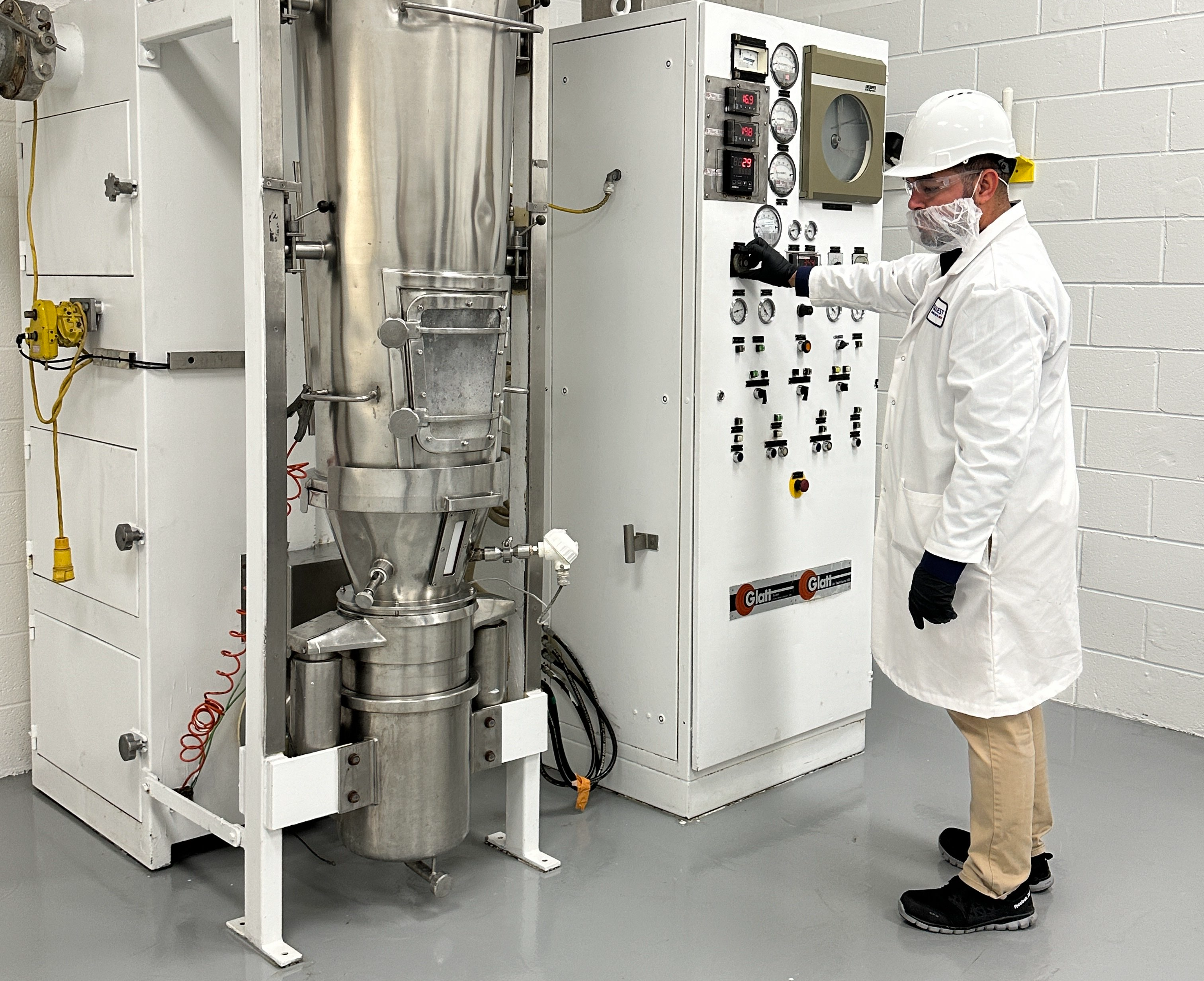Ingredients: From the Molecules Up
Not all aloe is created equal; not all water is the same. Jack Brown, VP of sales and marketing for Lily of the Desert, Denton, TX, says his company has discovered that aloe’s benefits lie in “the naturally-occurring high molecular weight polysaccharides,” which they concentrate and put in their aloe products. A 2005 study on aloe’s polysaccharides confirms this: polysaccharides with a molecular weight between 5KDa and 400KDa were most potent, as determined by the increased production of cytokines, the release of nitric oxide, the expression of surface molecules, and phagocytic activity (1). Hilary Orr-McMahon, founder of Honestly pHresh, Huntington Beach, CA, includes pre- and probiotics in her company’s deodorant. Now that they can be made in a shelf-stable variant, they can be put to work encouraging healthy bacteria right where it matters, so that odor-causing bacteria has a harder shot at multiplying.
Regis Haberkorn, president of New York City-based INIKA Organic USA, says one of the current trends in the beauty industry is “traceability of ingredients. Women (and men) want to know where their ingredients are coming from.” Several companies agree, and take it way past the organic label. Eric Gustafson, general manager for NaturColor, Napa, CA, says his company uses only Italian pigments: “We believe there is no higher attention to detail, to the quality of pigments, than given to those coming from that region.”
Georgiana Rowley, brand manager for ANNEMARIE BÖRLIND, based in Ghent, NY, stresses her company’s insistence on good sourcing practices, “thermal, deep spring water from our own well in the Black Forest” provides the base for all their products, which are made with pure materials and organic, non-GMO ingredients. Where do those materials come from? Rowley says, “our own proprietary sources or from fair trade, sustainable projects we actively support.” Roses Not Opium, for instance, is a project supported by ANNEMARIE BÖRLIND which grows some of its roses in an elevated region of Iran. The roses grow in organic soil and are bought at a fair-trade price that keeps the farmers out of the opium business. These supply systems can take a long time to establish. Myra Mesko, founder of Botanical Rush, Boulder, CO, says it took her two years to find the right supplier with the perfect phytocannabinoid extract.
Quality ingredients, customers should understand, don’t just come from someone’s backyard. Melinda Olson, founder and CEO of Earth Mama Organics, Oregon City, OR, explains, “calendula—a.k.a. Pot Marigold, or Mary’s Gold—is not the same as the plain old marigold flower that is planted next to a picket fence.” In an era of DIY videos and articles, it’s important to remember that just because customers can grow a similar plant does not mean it’s the same plant— not to mention that a cheaper product might just have cheaper ingredients. As incredibly important as quality control is, third-party verification is necessary to confirm a product’s claims. “The word natural is marketing lingo,” Olson says, “while the word Organic indicates a third-party verification.”
Once a customer finds the organic label and checks the ingredients, they have to remember that good ingredients are also fair-trade, sustainable, tested and re-tested, and carefully produced, with the same care being put into their production and extraction. Mesko wants to remind retailers that the presence of phytocannabinoid oil in a product (even organic, full spectrum oil) doesn’t necessarily mean it’s worth the money. “It’s the way it’s processed, it’s the attention to detail, it’s making sure it never gets too hot,” Mesko says. Tracey Settar, VP of the salon division of Reviva Labs based in Haddonfield, NJ, says Reviva’s anti-aging line makes use of two separate extracts of vitamin C—ascorbic acid itself and aminopropyl ascorbyl phosphate, a derivative of vitamin C that is more stable than ascorbic acid. Even a well-known ingredient has nuances your customers might not know about (2).
According to Rowley, “mixing good ingredients doesn’t necessarily make for good, effective skincare.” Rather, it’s about getting the right combination of ingredients in the right ratio. For instance, Orr-McMahon refuses to use baking soda because it’s alkaline and our skin is more acidic. The disruption of the skin’s natural pH can cause redness, rashes or discoloration. ANNEMARIE BÖRLIND insists on “independent clinical trials on finished products, not ingredients,” for precisely that reason. As great as baking soda is, sometimes it just won’t work. Haberkorn puts it most succinctly; “Consumers who want natural are not ready to compromise on quality and results. Products that can deliver both will be winners.”
This Year’s Stars
Activated charcoal, as Settar points out, is “gaining a lot of popularity in the natural industry.” Charcoal is activated when combined with a gas or activating agent that expands its surface area, allowing it to bind to drugs and toxins (3). It can be used to deal with a poisoning or overdose, with a doctor’s orders (3). It is used to a similar end in the beauty industry—Settar says charcoal helps “purify the skin and reduce large pores.” The brand My Magic Mud devotes a page to the science that says charcoal can whiten teeth and is based entirely around activated charcoal products. Reviva Labs also has a line of activated charcoal products, and Schmidt’s Naturals has charcoal toothpaste, deodorant, and soap. It’s showing up across a whole range of beauty products and while it might not have made it into the most popular products list yet, it’s moving up fast.
Phytocannabinoids are finding a home in the beauty industry. One 2009 scientific review pointed out that cannabinoid receptor CB1R can be found on cutaneous nerves, and endocannabinoids could be involved in differentiation of keratinocytes—in other words, the generation of skin cells and the shedding of dead skin cells (4). “It’s so exciting to be in this industry at a time when industrial hemp is legal,” Mesko says. That said, your customers need to be careful. “Companies are trying to capitalize on this new rush, and many of them are just using the distillate, which is just the isolated water-soluble form of CBD, not the full spectrum form,” says Mesko. A 2015 study by Ruth Gallily et al. found that cannabidiol itself, the purified, water-soluble product, had only a limited effect on the patients. While cannabidiol is a “major constituent” of cannabis, and other cannabinoids are only present in minute amounts, unpurified plant extracts from the Cannabis sativa Linn plant that contained a high amount of cannabidiol showed a clear correlation between the dose and the anti-inflammatory reaction (5). Besides just ensuring that a product contains full spectrum cannabinoids, customers should make sure they know how much they’re getting. “Buyer beware,” Mesko warns, “the label should say what dose, what potency, is in one ounce of the formula.”
Stacey Egide, founder and CEO of Andalou Naturals, Novato, CA, prefers to use hemp seed oils and hemp stem cells. Unlike cannabidiol, which is extracted from the flowers and leaves of the hemp plant, hemp seed oils and stem cells are “naturally occurring phytocannabinoid antioxidants extracted from the mature stalk of the hemp plant” (6). Hemp seed oil is a healthy oil containing linoleic acid and alpha-linolenic acid, with a low level of saturated fat (6). Andalou Naturals uses the stem cells and the oil in conjunction for “increased oxygenation, hydration, and a glowing complexion.” Egide sees a future for phytocannabinoids. “As we learn more about the benefits of hemp for skin and hair,” she says, “more products with phytocannabinoids may be on the forefront.” Until then, though, we can keep on using hemp, which Egide thinks is more than good enough. “Hemp is definitely a superpowered ingredient,” Egide says. Beside the fact it contains antioxidant and is anti-inflammatory, it helps restore moisture to the skin and hair.
Anti-Aging Never Gets Old
Aging is a visible process, but the lines and wrinkles that so many people hate are also signs of waning cellular health. Products that combat it do so in terms of the reduction of free radicals and the production of collagen. Free radicals are any molecular species capable of independent existence that contains an unpaired electron in atomic orbital, making the radical unstable and reactive (7). They are created through normal metabolic processes, but can also come from external sources, such as cigarette smoke, pollutants, or chemicals. If they overwhelm the body’s ability to regulate them with antioxidants, they can adversely alter lipids, proteins and DNA, and trigger a number of diseases (7). Collagen, which most customers know of as what keeps skin plump, is a protein that makes up 30% of all the proteins within the body, and is found in bones, tendons, ligaments, and—of course—skin. It prevents the absorption and spreading of pathogenic substances, toxins, and microorganisms, and holds structures together (8). As bodies slow their production of collagen, hair gets “lifeless,” tendons and ligaments lose their elasticity, joints get stiff, and skin becomes thinner and easier to damage (8).
Anti-aging products are selling well. Settar lists Reviva’s Anti-Aging Trio as its most popular product; Rowley says ANNEMARIE BÖRLIND‘s best seller is Eye Wrinkle Cream; Mesko says Crow-Be-Gone is one of Botanical Rush’s top products; NaturColor is devoted entirely to helping consumers cover up grey hair. Collagen and collagen boosters are high on the list of important ingredients, which also contains stem cells from roses and from hemp, CoQ10, and peptides. Customers getting into natural products are happy to start the anti-aging process early. Health is a big selling point, and it shows in the way companies describe their products. Settar says Reviva’s anti-aging products go further than just skin-deep. The two types of vitamin C in its serum, for instance, are for both reducing lines and wrinkles and fighting free radicals, covering both the symptom and the cause. Rowley’s list of popular products includes two antioxidant serums, one of which stimulates the skin’s natural collagen production, and one made with stem cells to counteract the loss of collagen. These are the primary selling points, too, not secondary to beauty.
Nature and Nurture
“Beauty is pain” is out; “beauty is health” is in. Skincare product titles might contain the word beauty, but there aren’t many product descriptions that push prettiness. For instance, Settar says Reviva’s anti-aging products “make a difference in the skin” rather than mentioning how beautiful youthful skin is. When she describes the benefits of charcoal, “purify the skin” comes before “reduce large pores.” Rowley says maturing skin should also be healthy, even as she calls skincare a beauty routine. ANNEMARIE BÖRLIND sells a serum that “counteracts loss of collagen, soothes, moisturizes, firms and revitalizes”—and it’s not until the end of that list that we move out of health and comfort and into an area adjacent to beauty. Brown talks about aloe’s “200 biologically-active components,” which work together to help give the user optimal health; makeup company INIKA Organic’s slogan is “Healthy is Beautiful.” Many companies are focusing on health over beauty.
Honestly pHresh embodies this trend. “I love explaining that it’s the aluminum in traditional deodorants that will plug the sweat glands, inhibiting this natural process. Humans are meant to perspire,” Orr-McMahon says, “and if you let it go, chances are your body will regulate itself in a couple of weeks. Most people are up for the challenge as soon as they realize the process.” Customers are looking to eliminate toxic ingredients from their lives, even at the cost of sweat. Olson’s consumer base is particularly important here. “Your armpits are a direct channel to your lymph nodes, which can only handle so many toxins,” Olson says, “and aluminum is a known neurotoxin.” During pregnancy and breastfeeding, babies are the most fragile population on the planet, and what enters a pregnant or breastfeeding woman’s body will end up in her baby. “I’ll take wet armpits over neurotoxins every day,” Olson says. She also likes to use organic deodorant— “that way, your armpits can still smell pretty.” Beauty hasn’t yet left the car, but it is letting health take the wheel.
Moreover, there is a trend towards helping the body do what it does best, rather than interfering in an attempt to do synthetically what the body can do naturally. Settar says her company’s collagen products “help boost the collagen in the skin”—the important part here is that they don’t just add collagen; rather, they recognize that the body knows how to make collagen, and just needs a boost. Rowley lists Orange Blossom Energizer as one of her company’s most popular products. It “stimulates skin’s natural collagen-producing mechanism,” she says, again deferring to the body’s expertise. Brown talks about the health benefits of aloe in terms of boosting the body’s natural processes. It “balances digestion, which when working correctly, helps maintain good health throughout the whole body. So your immune system reaps the benefits, high levels of toxins in your body are lowered, and naturally-occurring antioxidants are supported.” Organic deodorant doesn’t stop sweat, because that would be interfering with a natural and necessary bodily process. It makes sense that a desire for natural products would come hand-in-hand with an appreciation for nature and for the human body. “Mother Nature provides,” Mesko says, and clearly, consumers agree.
Emerging Trends
Men’s Lines. HABA products have, for so long, been considered the realm of women, but more and more companies are finding ways to include men, whether through a token mention, marketing, or whole lines of men’s products. While the general trend exists, companies vary widely in how they include men. Seaweed Bath Co. mentions their products are for both men and women; their packaging consists of neutral colors and their product descriptions are gender-neutral. Dr. Bronner, along the same lines, has absolutely gender-neutral packaging and product descriptions. Between that and the fact the website features Dr. Bronner himself, the company makes it abundantly obvious its products are meant for men as well as women.
Several companies, however, created a line marketed towards men. Honestly pHresh has a line of men’s deodorant sticks with black packaging instead of white; Lily of the Desert has a men’s line in which the packaging is black and grey instead of pink and white; Andalou Naturals, which color-codes its products, color-codes the men’s line black. In all three cases, the products themselves are nearly identical to the women’s versions: the scents, the ingredients and formulas are incredibly similar; the only difference is the marketing
That said, there are products geared towards men as well as marketed towards them. ANNEMARIE BÖRLIND has a men’s line: packaged in green, three of the five products are for shaving purposes, but their revitalizing cream and shower gel are markedly different in terms of ingredients from the women’s versions. Manscaped, based out of San Diego, CA, is the center for men’s grooming products: the whole product line is geared towards men, from the name of the company to the names of the products, which range from The Lawn Mower body razor to the Crop Cleanser hair and body wash. Packaged in black and brown, the product descriptions are fairly similar to the product descriptions for women’s products—the Crop Cleanser, for instance, leaves skin “clean, fresh, moisturized, and reinvigorated”— but the ingredient list is shorter, and it hasn’t yet attained the organic, sulfate-free status of other natural products companies. That said, Steve King, co-founder of Manscaped, pointed out in a press release that “More than 70% of men today are manscaping.” The company created its products for a man’s distinctive grooming needs, indicating the growing trend in which men look for the same access to grooming tools that women have.
And amidst all of this, Schmidt’s Naturals has simplified the whole trend—keep the same scents; keep the same packaging; just put a man on the front page, next to the line “Our scents are for everyone, no matter how you identify.”
Inclusivity. Beyond Schmidt’s Naturals being entirely gender-neutral— “no matter how you identify” leaves the door open for non-binary people, too—there’s INIKA’s commitment to diversity. Its products are certified halal, and the foundation line includes colors across the spectrum of skin tones. “Makeup brands are expanding and enhancing their lines to make them accessible for everyone,” Haberkorn says. It’s about “inclusiveness—embracing women of all skin tones and ethnicities.”
Feminine Hygiene. While women have always been the target consumer base for HABA products, their intimate needs are also being addressed. Reusable menstrual cups are on the rise, and Natracare is now extending into mainstream stores. Women who want all-natural are realizing it really is possible to go all natural, and are gravitating towards ways to make that happen.References
- Sun-A Im, et al., “Identification of optimal moleular size of modified Aloe polysaccharides with maximum immunomodulatory activity,” “International Immunopharmacology,” 5 (2), 271-279 (2005). https://doi.org/10.1016/j.intimp.2004.09.031, https://www.sciencedirect.com/science/article/pii/S1567576904003170
- “Aminopropyl ascorbyl phosphates.” Web. Accessed 7/30/18. https://www.truthinaging.com/ingredients/aminopropyl-ascorbyl-phosphates
- “Activated Charcoal.” Web. Accessed 7/30/18. https://www.webmd.com/vitamins-and-supplements/activated-charcoal-uses-risks#1
- Piotr Kupczyk, Adam Reich, Jacek C. Szepietowski, “Cannabinoid system in the skin – a possible target for future therapies in dermatology,” Experimental Dermatology, 18 (8), 669-679 (2009). https://doi.org/10.1111/j.1600-0625.2009.00923.x https://onlinelibrary.wiley.com/doi/full/10.1111/j.1600-0625.2009.00923.x
- Ruth Gallily, Zhannah Yekhtin, Lumír Ondrej Hanuš, “Ocercoming the Bell-Shaped Dose-Response of Cannabidiol by Using Cannabis Extract Enriched in Cannabidiol”, Pharmacology and Pharmacy, 6 (2), 75-85 (2015). Doi 10.4236/pp.2015.62010. http://www.scirp.org/Journal/PaperInformation.aspx?PaperID=53912#.VP4EIildXvY
- Sarah Brewer, “What’s the difference between hemp seed oil and cannabidiol oil (CBD)?” Web. Accessed 7/24/18. https://www.healthspan.co.uk/advice/whats-the-difference-between-hemp-seed-oil-and-cannabidiol-oil-cbd
- V. Lobo et al., “Free radicals, antioxidants and functional foods: Impact on human health,” Pharmacognosy Review, 4 (8), 118-126 (2010). Doi 10.4103/0973-7847.70902 https://www.ncbi.nlm.nih.gov/pmc/articles/PMC3249911/
- Ananya Mandal, “What is Collagen?” Web. Accessed 7/30/18. https://www.news-medical.net/health/What-is-Collagen.aspx









